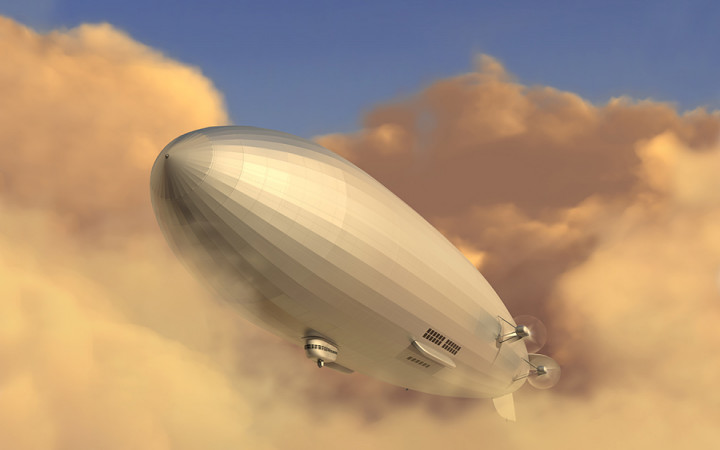Today’s Wonder of the Day was inspired by Seth. Seth Wonders, “What is the Hindenburg?” Thanks for WONDERing with us, Seth!
Have you ever been to a major professional sporting event where the Goodyear blimp flew overhead? Today, blimps are a bit of a novelty when it comes to aviation, but would you believe that huge airships were once considered the cutting-edge future of air transportation?
The first airship dates back to 1852 when Frenchman Henri Giffard built a blimp filled with hydrogen. It carried a small steam engine that turned a propeller, allowing the airship to reach a speed of about six miles per hour.
Later in the 19th century, German Count Ferdinand von Zeppelin improved upon the blimp. He developed the rigid airship with a framework of light metal girders that helped to protect the interior, which was filled with highly-flammable hydrogen gas. These rigid airships came to be known as zeppelins or dirigibles.
Although their use of hydrogen made them vulnerable to explosions, rigid airships were seen as the future of air transportation. The Germans continued to develop larger and larger airships that could carry many passengers.
In 1929, German airship Graf Zeppelin successfully flew around the world. In the next decade, the Graf Zeppelin began the first ever transatlantic air service. It was so successful that it spurred the Germans to create an even larger passenger airship: the Hindenburg.
The Hindenburg was launched in March 1936 in Friedrichshafen, Germany. The 804-foot airship was considered the pride of Nazi Germany. With a capacity of just over 1,000 passengers and a maximum speed of 84 miles per hour, the Hindenburg quickly became a popular means of transatlantic transport between Germany and the United States.
Tragically, the Hindenburg — and the popularity of rigid airships altogether — met a fiery end on May 6, 1937. On that day, the Hindenburg was scheduled to land at a naval facility in Lakehurst, New Jersey. Upon its approach, it suddenly burst into flames.
The entire ship was destroyed in just over 30 seconds, with debris falling 200 feet or more and littering the airfield. There were 97 people aboard the Hindenburg that fateful day, and 36 people died as a result of the tragedy: 13 passengers, 22 crew members, and one civilian member of the grounds crew. Most of the survivors sustained substantial injuries.
The exact cause of the explosion remains a mystery to this day. Given the growing anti-Nazi sentiment in the United States, some suspected the explosion was an act of sabotage. Others speculated it was a result of a combination of a hydrogen gas leak and a spark of some kind, possibly from a discharge of atmospheric electricity.
The Hindenburg was actually designed to use helium gas, which is safer than hydrogen. However, the United States had imposed export restrictions on helium gas against Nazi Germany, which forced the Germans to use highly-explosive hydrogen instead.
The Hindenburg disaster was a media sensation. The entire incident was captured on video. In addition, radio announcer Herb Morrison recorded a famous moment-by-moment description of the events as they unfolded. He is known for uttering the famous line, "Oh, the humanity!"
The disaster was the subject of the first coast-to-coast radio news broadcast. The video of the fiery tragedy impacted people all over the world and interest in zeppelins plummeted. What once had been considered the future of commercial air transportation effectively ended with the Hindenburg disaster.





